Contents
Introduction to Minecraft Bricks
Since their debut in the massive 0.9.0 update back in 2009, bricks have become a cornerstone in the vast, blocky world of Minecraft. More than just another building material, bricks carry an aesthetic charm that has captivated players for over a decade. These humble yet versatile blocks offer a touch of classic elegance and modern flair to any construction, standing out amidst the game’s vast array of building materials. Whether it’s for crafting a quaint village home or a grand cityscape, bricks in Minecraft offer a unique blend of strength and style. Their uniform design, with its pleasing symmetry and warm hues, provides an appealing choice for builders aiming to create structures with a distinct and refined look.
Gathering Materials for Bricks
- Seeking Out Clay Blocks: Your journey to crafting bricks in Minecraft begins with the quest for clay. These essential blocks are typically nestled in shallow waters, where rivers meet the sea or along the tranquil banks of lakes and swamps. Keep an eye out for their distinctive bluish-gray hue, a telltale sign amidst the water’s edge. Adventurous players can also explore the lush caves biome, where clay blocks hide, waiting to be discovered.
- Mining Clay Efficiently: Once you’ve located these clay blocks, it’s time to mine. A trusty shovel is your best friend here, swiftly breaking the blocks and yielding multiple clay balls. Remember, each clay block is a treasure trove, giving you four clay balls – a crucial ingredient in your brick-making endeavor.
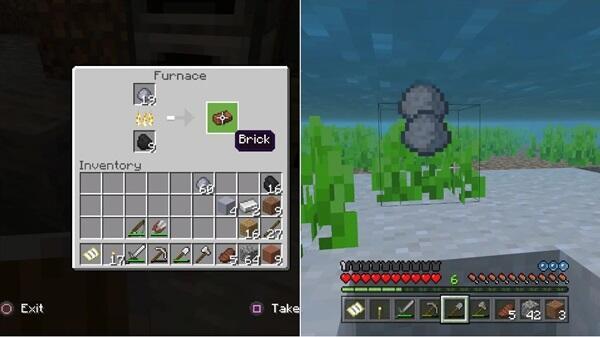
- Crafting a Furnace: With your clay balls in hand, the next step is to construct a furnace. This is where cobblestones, the game’s ubiquitous resource, come into play. Venture into caves, scale mountains, or simply dig into the earth to gather these stones. Once you have eight cobblestones, use a crafting table to align them along the edges, leaving the center slot empty. Voilà, your furnace is ready!
- Fueling Your Furnace: Your furnace needs power to transform clay into bricks. The game offers a plethora of options for fuel. Lava, the molten gift of underground realms, makes for a powerful choice. Alternatively, coal or charcoal are reliable and easier to obtain. For those who prefer a more renewable approach, any wooden item can serve as fuel, from logs to planks, embracing the game’s ethos of resourcefulness.
- The Reward of Resourcefulness: As you gather clay and cobblestones, and craft your furnace, you’re not just preparing to make bricks. You’re engaging with Minecraft’s core philosophy of exploration and creativity. Every block mined, every item crafted, is a step toward realizing your architectural dreams in this pixelated world.
Crafting Process of Bricks
- Preparing the Furnace: Begin your brick-making journey by firing up the furnace you’ve crafted. The furnace serves as the heart of the brick-making process, transforming raw clay into the sturdy bricks needed for your construction projects.
- Choosing Your Fuel: Load your furnace with a suitable fuel source. You have a variety of options here, from the readily available coal or charcoal to the more adventurous choice of a lava bucket. Wood, in all its forms, can also be used, showcasing Minecraft’s flexibility in resource use. Each fuel type brings its own smelting speed and efficiency, so choose according to your needs and availability.
- Smelting the Clay Balls: Place the clay balls, harvested from your earlier mining endeavors, into the top slot of the furnace. The furnace will then work its magic, with each clay ball undergoing a transformation under the intense heat.
- The Transformation Process: Watch as the furnace’s flames do their work. The clay balls gradually harden and change their form, emerging as bricks. This process symbolizes the core of Minecraft’s crafting system, where raw materials are converted into more complex and useful items.
- Collecting Your Bricks: Once the smelting process is complete, you’ll find your newly crafted bricks in the furnace’s output slot. Each smelted clay ball yields one brick, ready to be used in your next big construction project.
- Inventory Management: Remember to keep an eye on your furnace as it works. Managing your inventory efficiently is key to a smooth crafting experience. Ensure you have enough space to collect your bricks, and keep a steady supply of both clay balls and fuel to maintain your brick production.
Crafting Brick Blocks and Flower Pots
Crafting Brick Blocks:
- Gathering Bricks: Start by gathering your freshly smelted bricks. You’ll need four of them to create one brick block.
- Arranging Bricks on the Crafting Table: Access your crafting table and arrange the four bricks in a 2×2 square pattern. This simple yet precise arrangement is key to crafting a brick block.
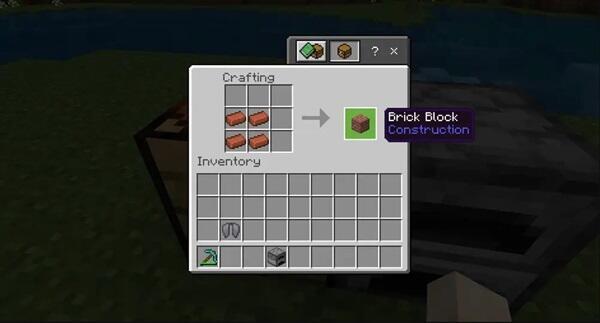
- Creating the Brick Block: Once arranged, the bricks combine to form a brick block. These blocks carry a distinct, textured appearance that adds character and depth to any building, be it a humble abode or a sprawling fortress.
Crafting Flower Pots:
- Collecting Three Bricks: For a flower pot, you only need three bricks. It’s a small investment for a significant decorative touch.
- Arranging Bricks in a V Shape: On your crafting table, arrange these three bricks in a V shape. This formation is crucial for shaping the flower pot.
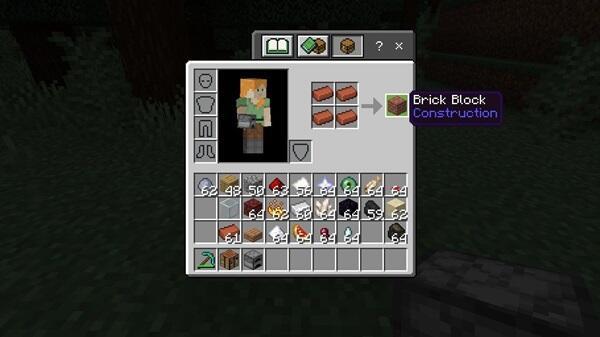
- Finalizing the Flower Pot: Completing this arrangement results in a quaint flower pot, perfect for holding a variety of plant life. From bright flowers to green saplings, these pots can add a splash of color and life to your Minecraft builds, enhancing the aesthetic appeal and bringing a touch of nature into your virtual world.
Both brick blocks and flower pots are not just functional items but also artistic expressions in the world of Minecraft. They allow players to add a personal touch to their creations, blending the functional needs of building with the beauty of decorative design.
Exploring Nether Bricks
- Origins in the Nether: Nether bricks, a distinct and formidable building material, originate from the Nether, Minecraft’s perilous and fiery dimension. Their dark, reddish-brown hue immediately sets them apart from their overworld counterparts.
- Fire-Resistant Nature: One of the key features of Nether bricks is their innate resistance to fire. This makes them an ideal choice for constructing in and around areas where fire is prevalent or used decoratively, such as fireplaces or lava flows.
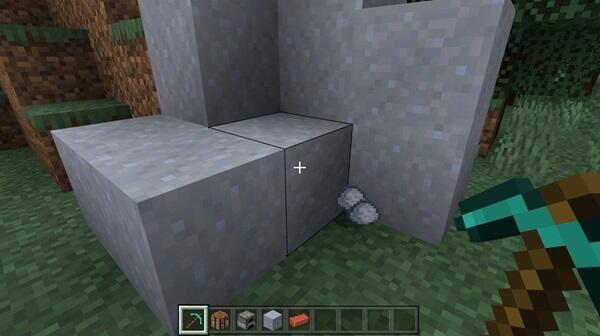
- Blast Resistance: Beyond their fire-resistant capabilities, Nether bricks are also known for their robustness against explosions. This attribute is particularly valuable in areas prone to creeper explosions or when building near ghasts in the Nether.
- Crafting Nether Bricks: To craft Nether bricks, players must first smelt netherrack, the ubiquitous block of the Nether, in a furnace. This process transforms the netherrack into individual Nether bricks, which can then be used to create Nether brick blocks.
- Architectural Aesthetics: The unique appearance and properties of Nether bricks allow players to design striking structures that stand the test of time and elements. Whether it’s a fortress towering over the Nether’s lava seas or a decorative element in overworld constructions, Nether bricks bring a touch of the Nether’s ominous beauty to any build.
Incorporating Nether bricks into Minecraft creations not only enhances their durability but also adds a dramatic and distinctive aesthetic, highlighting the game’s vast possibilities in creative expression and architectural design.
Creative Uses of Bricks in Minecraft
Modern Architecture:
Bricks in Minecraft open up a realm of architectural possibilities, especially when it comes to crafting structures with a modern flair. Their clean, uniform texture makes them ideal for building contemporary homes, office buildings, or even entire city blocks. Imagine constructing a sleek, urban townhouse with smooth brick walls, or a bustling marketplace where brick stalls and shops line the streets. The red hue of the bricks can be contrasted with glass panes and stone slabs, creating visually striking and sophisticated buildings that stand out in the Minecraft world.
Historical and Cultural Structures:
Beyond modern designs, bricks are also perfect for recreating historical or culturally significant structures. Players can rebuild ancient temples or medieval castles, complete with brick battlements and towers. The time-worn appearance of brick blocks lends an air of authenticity to these builds, transporting players back in time. In these historical recreations, bricks can be used alongside cobblestone and mossy stone bricks to add variety and realism, perfectly capturing the essence of bygone eras.
Landscaping and Garden Designs:
Bricks are not limited to large-scale constructions; they also find their place in the finer details of Minecraft landscaping. Garden paths lined with neatly placed bricks, small bridges over tranquil ponds, or even ornate brick fountains can significantly enhance the beauty of any outdoor space. Flower pots crafted from bricks add a charming touch to gardens, balconies, or windowsills, hosting a range of Minecraft’s flora.
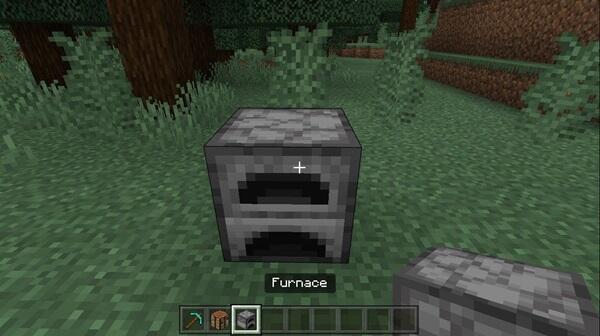
In essence, bricks in Minecraft are not just building materials; they are a canvas for creativity. Whether it’s crafting a modern metropolis, reviving historical architecture, or beautifying landscapes, bricks offer endless possibilities for imaginative and aesthetic construction in the game’s ever-expanding world.
Conclusion
Mastering the art of making and utilizing bricks in Minecraft is more than just a skill—it’s an avenue to elevate your gameplay experience. Whether you’re constructing grandiose structures, adding decorative touches, or exploring the creative limits of this virtual world, bricks play a pivotal role. They not only offer structural integrity and aesthetic appeal but also open doors to endless architectural possibilities. Understanding how to effectively craft and use these versatile blocks is a testament to the ingenuity and creativity at the heart of Minecraft, making every building endeavor a more enriching and enjoyable adventure.